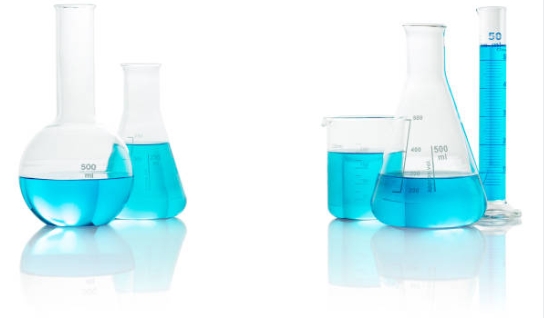Please Choose Your Language
Views: 222 Author: Carie Publish Time: 2025-04-05 Origin: Site








Content Menu
● Introduction to Chemical Raw Materials
>> Importance of Raw Materials
● Types of Chemical Raw Materials
● The Role of Raw Materials in Manufacturing
● Sourcing and Quality Control
>> 2. Quality Control Measures
● Challenges and Innovations in Raw Material Use
>> Challenges
>> Innovations
● Impact on Sustainability and Environmental Policies
>> 1. Sustainable Production Practices
>> 2. Environmental Regulations
● Economic and Social Implications
● FAQ
>> 1. What are chemical raw materials?
>> 2. Why is quality control important for raw materials?
>> 3. How do industries source chemical raw materials?
>> 4. What are some examples of renewable raw materials?
>> 5. How does green chemistry impact raw material use?
● Citation
The chemical industry is a cornerstone of modern civilization, producing essential products ranging from pharmaceuticals and fertilizers to plastics and electronics. At the heart of this vast industry lies chemical raw materials, the fundamental building blocks that drive innovation, efficiency, and sustainability. This article delves into why raw materials are indispensable to the chemical industry, examining their roles, types, sourcing, and impact on manufacturing processes.

Raw materials are the unprocessed substances used as inputs in chemical reactions to produce finished goods. These materials are essential for industries such as pharmaceuticals, textiles, agriculture, and electronics. Without them, the production of everyday items like medicines, adhesives, detergents, and plastics would be impossible.
- Foundation of Production: They are the starting point for creating complex chemical compounds.
- Economic Impact: Efficient use of raw materials can significantly reduce production costs.
- Innovation Driver: New raw materials often lead to breakthroughs in product development.
Chemical raw materials can be broadly categorized into two types:
Derived from living organisms or containing carbon compounds:
- Examples: Cellulose, lignin, methane.
- Applications: Pharmaceuticals, cosmetics, food additives.
Sourced from minerals or gases without carbon:
- Examples: Sulfur, nitrogen, oxygen, metals.
- Applications: Adhesives, sealants, ceramics.
Chemical raw materials play a pivotal role at every stage of manufacturing:
Raw materials determine the physical and chemical properties of the final product:
- Solubility
- Crystallization
- Corrosion resistance
Efficient use of raw materials minimizes waste and maximizes output:
- Example: Green chemistry principles focus on sustainable resource use.
High-quality raw materials ensure consistency and reliability in production:
- Purity standards are critical for pharmaceuticals and food products.
Raw material sourcing involves identifying reliable suppliers who can provide consistent quality:
- Organic sources (e.g., biomass)
- Inorganic sources (e.g., mining operations)
To ensure safety and performance, manufacturers employ rigorous testing methods:
- Spectroscopy
- Chromatography
- Titration

1. Environmental Impact:
- Non-renewable resources like petroleum contribute to pollution.
- Mining operations can harm ecosystems.
2. Supply Chain Disruptions:
- Geopolitical issues can affect the availability of critical raw materials.
3. Cost Management:
- High-quality raw materials often come at a premium price.
1. Renewable Resources:
- Biomass and CO₂ as alternatives to fossil fuels.
- Biofuels and bioplastics are gaining popularity.
2. Recycling Initiatives:
- Circular economy models focus on reusing waste materials.
3. Advanced Technologies:
- Catalysts improve reaction efficiency.
- AI-driven supply chain management optimizes sourcing.
The use of chemical raw materials has significant implications for sustainability and environmental policies:
- Green Chemistry: Focuses on minimizing waste and using renewable resources.
- Circular Economy: Encourages recycling and reuse of materials.
- Emissions Control: Policies aim to reduce pollution from raw material extraction and processing.
- Resource Conservation: Efforts to protect natural resources for future generations.
- Eco-Friendly Products: Consumers increasingly demand products made from sustainable raw materials.
- Transparency: Companies are expected to disclose their sourcing practices and environmental impact.
The chemical industry's reliance on raw materials also has profound economic and social implications:
- Job Creation: The industry supports millions of jobs worldwide.
- Revenue Generation: Chemical products contribute significantly to national economies.
- Community Engagement: Companies must engage with local communities to address environmental concerns.
- Health and Safety: Ensuring worker safety and minimizing health risks associated with raw material handling.
- Trade Agreements: Access to raw materials often influences international trade policies.
- Market Fluctuations: Changes in raw material prices can impact global markets.
Chemical raw materials are indispensable to the chemical industry, forming the backbone of countless manufacturing processes. Their selection, quality control, and innovative use determine not only the efficiency of production but also its environmental footprint. As industries pivot toward sustainability, the focus on renewable resources and green chemistry will continue to grow.

Chemical raw materials are basic substances used in chemical reactions to produce finished goods such as pharmaceuticals, plastics, or fertilizers.
Quality control ensures that raw materials meet purity standards and perform consistently during manufacturing processes.
Industries source these materials from organic (e.g., biomass) or inorganic (e.g., minerals) suppliers based on their specific needs.
Examples include biomass (used for biofuels) and carbon dioxide (used in certain chemical reactions).
Green chemistry promotes sustainable practices by minimizing waste and using renewable resources efficiently.
[1] https://techbullion.com/raw-material-chemicals-the-key-to-quality-in-manufacturing-processes/
[2] https://www.arborpharmchem.com/raw-materials-chemicals-guide-to-industrial-processes/
[3] https://create.vista.com/photos/raw-materials/
[4] https://www.youtube.com/watch?v=Vz-EHAmVw2M
[5] https://www.geeksforgeeks.org/raw-materials-meaning-sources-types-examples/
[6] https://www.cin7.com/industry-terms/raw-materials/
[7] https://www.linkedin.com/pulse/industrial-raw-materials-importance-benefits-challenges-tityglobals
[8] https://aspioneer.com/from-raw-materials-to-finished-products-exploring-industrial-processes/
[9] https://www.netsuite.com/portal/resource/articles/inventory-management/raw-materials.shtml
[10] https://www.investopedia.com/terms/r/rawmaterials.asp
[11] https://www.eia.gov/consumption/manufacturing/briefs/chemical/index.php
[12] https://www.investopedia.com/ask/answers/042015/what-types-industries-are-main-consumers-products-chemicals-sector.asp
[13] https://www.investopedia.com/terms/m/manufacturing.asp
[14] https://pmc.ncbi.nlm.nih.gov/articles/PMC3102444/
[15] https://www.chemistryviews.org/raw-material-change-in-the-chemical-industry/
[16] https://www.britannica.com/technology/chemical-industry
[17] https://s3-ap-southeast-2.amazonaws.com/awm-media/collection/RCDIG1070170/document/5519496.PDF
[18] https://www.freepik.com/free-photos-vectors/processing-raw-materials
[19] https://www.freepik.com/free-photos-vectors/chemical-raw-materials
[20] https://www.vecteezy.com/free-videos/raw-material
[21] https://www.freepik.com/free-photos-vectors/raw-materials-processing
[22] https://www.freepik.com/free-photos-vectors/chemical-raw-material
[23] https://www.youtube.com/watch?v=XIGFxIATxE8
[24] https://www.alamy.com/stock-photo/raw-material-production.html
[25] https://unsplash.com/s/photos/chemical-industry
[26] https://www.acs.org/education/resources/highschool/chemmatters/videos.html
[27] https://www.istockphoto.com/photos/raw-materials-manufacturing
[28] https://www.istockphoto.com/photos/chemical-raw-materials
[29] https://www.vecteezy.com/free-videos/chemical
[30] https://www.freepik.com/free-photos-vectors/raw-material-usage
[31] https://unsplash.com/s/photos/raw-materials
[32] https://pixabay.com/videos/search/chemical%20industry/
[33] https://khatabook.com/blog/raw-materials/
[34] https://www.rolandberger.com/en/Insights/Publications/Closer-to-home-The-six-questions-every-chemical-manufacturer-must-answer-to.html
[35] https://www.britannica.com/technology/raw-material-industry
[36] https://www.investopedia.com/terms/m/mrp.asp
[37] https://www.deskera.com/blog/what-to-look-for-in-quality-chemical-raw-materials/
[38] https://craftybase.com/blog/what-does-raw-materials-mean/
[39] https://www.deskera.com/blog/raw-materials-inventory-management-guide/
[40] https://www.finaleinventory.com/inventory-management/understanding-raw-materials-definitions-formulas-types-and-importance
[41] https://www.iea.org/energy-system/industry/chemicals
[42] https://www.businesschemistry.org/article/raw-material-excellence-in-the-chemical-industry-a-game-changer-turning-cost-into-value/
[43] https://www.products.pcc.eu/en/academy/mineral-raw-materials/
[44] https://create.vista.com/videos/raw-materials/
[45] https://create.vista.com/videos/raw-materials-for-metallurgy/
[46] https://byjus.com/chemistry/materials-questions/
[47] https://content.wisestep.com/common-interview-questions-answers-chemical-engineers/
[48] https://www.mprl-series.mpg.de/proceedings/2/2/index.html
[49] https://www.plasticstoday.com/materials/four-crucial-questions-to-ask-your-materials-supplier-to-mitigate-supply-chain-uncertainty
This comprehensive article explores Spain's top ferrous sulfate manufacturers and suppliers, emphasizing their product diversity, industrial applications, and strict quality standards. It highlights the essential uses of ferrous sulfate in water treatment, agriculture, pharmaceuticals, and surface treatment processes while underscoring Spain’s pivotal role in the European chemical supply chain.
This comprehensive article examines leading ferrous sulfate manufacturers and suppliers in Italy. It covers key companies, advanced production technologies, quality control, and diverse applications in agriculture, water treatment, and metal surface processing. It emphasizes Italy’s innovation, customization capacity, sustainability efforts, and reliable supply chain, offering valuable insights for businesses sourcing ferrous sulfate globally.
This article explores the leading ferrous sulfate manufacturers and suppliers in Russia, highlighting their production capabilities, product applications, and market roles. It covers key industries served, product types, customization options, export activities, and sustainability efforts, providing a detailed insight into Russia’s ferrous sulfate supply landscape.
This comprehensive article provides insight into the leading ferrous sulfate manufacturers and suppliers in the UK, detailing product applications across industries such as water treatment, agriculture, pharmaceuticals, and surface chemical treatments. It discusses packaging, quality assurance, supplier selection tips, and includes a helpful FAQ section, enabling businesses to make informed sourcing decisions for ferrous sulfate.
This article explores the top ferrous sulfate manufacturers and suppliers in Germany, focusing on key companies like Cofermin Chemicals, Ferro Duo, and Kirsch Pharma. It covers product types, applications in water treatment, agriculture, and pharmaceuticals, and highlights the high-quality standards and sustainability efforts prevalent in the German chemical industry. The comprehensive overview also includes insights into market trends and regulatory compliance, supported by illustrative images for enhanced understanding.
This comprehensive article explores the top ferrous sulfate manufacturers and suppliers in France, highlighting their production capabilities, adherence to quality standards, and diverse applications in surface treatment, wastewater management, and agriculture. It also covers innovative production technologies, OEM services, and market challenges, providing a complete and detailed overview.
This article explores the top ferrous sulfate manufacturers and suppliers in Europe, highlighting their product ranges, production technologies, and market roles. It provides detailed insights into how European companies support various industries with high-quality ferrous sulfate products while focusing on sustainability and innovation.
This article provides a detailed overview of the top ferrous sulfate manufacturers and suppliers in America, focusing on companies like American Molecules LLC, Noah Chemicals, and Haviland Enterprises. It covers their product forms, industries served, quality standards, and benefits of partnering with them. The piece includes images showcasing products and packaging and answers frequently asked questions to aid buyers in making informed decisions.
This article reviews top Chromium Trioxide manufacturers and suppliers in Japan, such as Nippon Chemical Industrial and SRL, highlighting their product quality, OEM services, stringent safety standards, and broad industrial applications including automotive, electronics, and aluminum surface treatments. Japan remains a trusted global chromium trioxide source.
Explore South Korea's top Chromium Trioxide Manufacturers and Suppliers, including their innovation, global reach, and focus on safety and sustainability. Learn about leading companies, industry applications, environmental regulations, advanced market trends, and answers to the most common market questions—empowering international buyers and partners with comprehensive insights into this critical industrial chemical.
This comprehensive guide covers the top Chromium Trioxide Manufacturers and Suppliers in Portugal, detailing chemical properties, industrial applications, supplier profiles, compliance requirements, and practical advice for selecting trusted vendors. The article also includes key safety practices, industry insights, and an extensive FAQ section to facilitate informed purchasing and safe utilization of chromium trioxide.
This comprehensive article examines Spain’s top chromium trioxide manufacturers and suppliers, highlighting their roles in sectors like aluminum surface treatment and automotive coatings. It details major industry players, product applications, quality control, safety practices, and innovations. The content features relevant images and a detailed FAQ, helping readers understand the market landscape and Spain’s manufacturing capabilities in chromium trioxide.
Explore Italy’s top Chromium Trioxide Manufacturers and Suppliers, their production processes, quality standards, and industrial applications. Discover why Italian suppliers, including Italchimici and Cromital, are trusted worldwide for reliable chromium trioxide solutions in plating, anodizing, and industrial chemicals.
This article reviews the top chromium trioxide manufacturers and suppliers in Russia, highlighting industry leaders, their strengths, and the key benefits of sourcing from Russia, with a focus on quality, technology, and global export capability. It explores main application areas, safety, regulatory considerations, and emerging industry trends, concluding with FAQs for industrial buyers.
Discover Russia’s leading Stannous Sulfate Manufacturers and Suppliers, their applications, advantages, and industry trends. Explore reliable sourcing, key market insights, sustainability efforts, and expert FAQ to optimize your next procurement decision in the Russian specialty chemicals sector.
This article provides an in-depth overview of the top chromium trioxide manufacturers and suppliers in the UK, focusing on companies like Oxkem and Plater Group. It covers their production methods, applications of chromium trioxide, safety standards, industrial uses, and available product packaging. The article also includes visuals and a detailed FAQ to assist businesses in choosing the right chromium chemical suppliers for industrial surface treatment and other applications.
This article explores leading chromium trioxide manufacturers and suppliers in Germany, detailing their advanced production technologies, commitment to environmental and safety regulations, and key market applications. Germany's chemical industry continues to supply high-quality chromium trioxide products crucial for electroplating, surface treatment, and chemical manufacturing, while actively pursuing greener and safer alternatives.
Explore the top chromium trioxide manufacturers and suppliers in France, their products, industrial applications, and regulatory compliance. This article guides businesses on sourcing high-quality chromium trioxide for electroplating, surface treatment, and wastewater management with local expertise and sustainable practices.
This article provides a comprehensive overview of the top chromium trioxide manufacturers and suppliers in Europe, including key companies such as AD Productions and Vopelius Chemie AG. It covers product forms, applications, regulatory challenges under EU REACH, and industry innovations. Emphasis is placed on product quality, safety, and tailored solutions, highlighting Europe's pivotal role in the global chromium trioxide market.
This article provides a comprehensive overview of the top chromium trioxide manufacturers and suppliers in America, detailing their product ranges, industry applications, safety considerations, and complementary services. It serves as an essential guide for businesses seeking reliable sources of high-quality chromium trioxide for various industrial uses.
